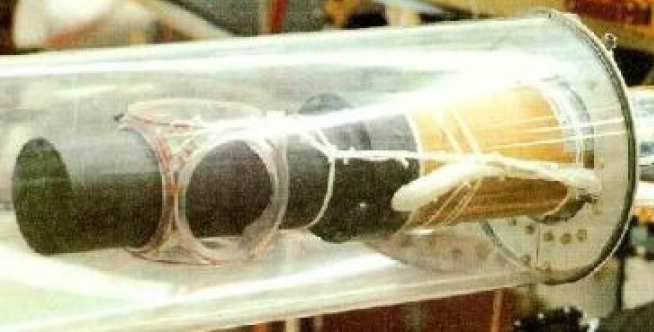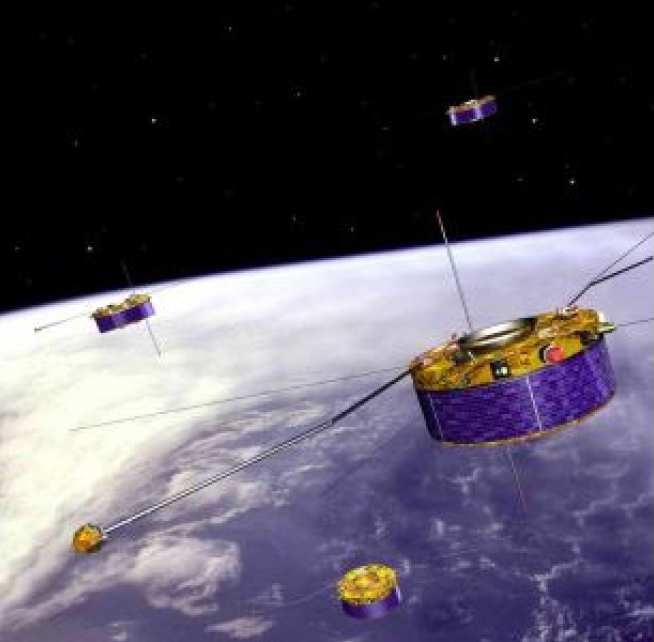Magnetometers and measuring magnetic fields in space

Magnetometers measure the Magnetic Field Intensity, B threading a sensor either as a magnitude measure |B| (scalar instrument) or as individual components Bx, By, Bz (vector instruments).
We distinguish between DC magnetometers which are sensitive in the bandwidth (0-60Hz) from AC magnetometers such as search coils which are sensitive at higher frequencies (>100Hz) and used in the study of wave phenomena.
Magnetometers for space

There are numerous methods of making magnetic field measurements. Some of the most common are detailed in the table below. For space applications the extreme environments, scientific ranging requirements and limited resources (low mass, low power) mean in practise the majority of space born magnetometers are either fluxgate or optically pumped designs such Vector Helium Magnetometers (VHM). VHM instruments have better resolution and stability than fluxgates and our laboratory has contributed hardware for the instruments flown on the Ulysses and Cassini spacecraft.
Fluxgates are much more common due to their significantly lower mass & power and Imperial College instruments are currently in-flight on board the Cluster missions, were successfully flown on the Ulysses & Double Star missions. The optimum space magnetometer instrument suite from a space science point of view is a fluxgate and VHM combination for the purpose of cross calibration. However due to mass and power constraints, this is not realistic for the vast majority of space missions.
Common Magnetometers
| Sensor Technology | Range (T) | Suitable for space flight |
|---|---|---|
| SQUID |
10-14 - 10 |
No - Cryostat needed |
| Optically Pumped |
10-12 - 10-4 |
Yes - B and |B| |
| Nuclear Precession |
10-11 - 10-2 |
Yes - |B| |
| Fluxgate |
10-10 - 10-4 |
Yes - B |
| Magnetoresistor |
10-10 - 104 |
No - poor temperature stability |
| Hall effect |
10-3 - 102 |
No - poor resolution at low field |
| Search Coil |
10-12 - 106 |
Yes for AC fields |
Measurement Range

Space borne magnetometers are designed to work over large field ranges - during a planetary fly-by the magnetic field may typically approach thousands of nT (if the planet has a magnetic field) whereas in the solar wind the ambient field can be typically sub nT. To resolve such very low fields it is usual to mount magnetometer sensors on rigid booms (typically some metres in length) away from the spacecraft in order to minimise the effect of magnetic contamination from spacecraft materials and currents. Space plasma missions will often include a Magnetic Cleanliness Programme to ensure that the field seen by the magnetometer due to spacecraft is within a precise limit defined by the scientific requirements of the mission.
Instrument Stability
Stability is a fundamental requirement for magnetometer measurements to ensure a profitable scientific return. Considerable effort is thus expended during design stages to ensure instrument sensor and sense electronics are stable & robust with respect to radiation damage, launch loads and thermal cycling due to eclipse etc. (often a dedicated sensor heater may be employed on deeper space missions). Due to the relative importance of magnetic field measurements fully redundant instrument designs are commonplace. Stability of the sensor calibration paramaters (ie noise, alignment, gain, offset and their associated temperature dependence) is also critical and numerous techniques have been developed for accurate determination of sensor calibration in-flight i.e. translating sensor 'volts' into 'nT'.